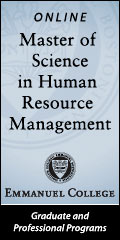Recruiting 101: Five Surefire Ways to Attract Top Talent
 Print this Article | Send to Colleague Print this Article | Send to Colleague
There’s a reason our profession is called human resources. It is about people, and more specifically about relationships. How an organization’s own people: it’s leadership, employees, and HR team, choose to relate to others defines the organization. Those relationships can be with other employees, clients, prospects, candidates, recruiters, college representatives, and community members. It is the public perception of these relationships that forms an employer brand. It is not something that can be created in a day (or when the market dictates). This brand should be cultivated over time—even when the organization isn’t hiring. Here are the five most important long-term strategies organizations can implement to recruit (and retain) the best employees:
1. Know your target and your message
The most effective way to attract top talent is to define what an "ideal employee" means for your organization. What type of people do you need? What skill sets are no longer relevant? Once you determine the kind of employee you want, develop your sales pitch. What do your target employees need to know about your organization? What will they find attractive, interesting, and challenging? By knowing your audience, you can better hone your message.
2. Streamline the staffing process
The biggest complaint from job-seekers is that they send their resumes out to companies, but they feel like they’re launching them into a black hole—they never hear back from organizations. Granted, the volume of candidates applying for jobs is massive, and it is difficult to keep up with the demand. Yet, an organization’s staffing activity is the best way to attract better prospects. If organizations do it well, word spreads. If they don’t, word spreads even faster. How an organization treats people during the application and interview processes is a telling sign as to how they treat their employees.
A good rule of thumb is that the organization should give back what an applicant puts in. For example, if someone submits a resume, that person should get an automated email response acknowledging receipt. If a person comes in for an interview, he or she should get a call back from a manager—and the response needs to be timely. Many HR managers think this is already happening at their organizations, but it needs to be formalized. A manager who does the interview might think that the hiring manager will get back to the interviewee and vice versa. The best way to avoid this confusion and simplify the system is to assign a point person. After interviews, candidates should have a business card with contact information for a specific person to answer any questions they may have.
3. Revamp your exit strategy
As important as it is to value people’s time and feelings during the hiring process, it is just as vital during downsizing. How do you send people out the door? The same attention, care, and respect that you afford your employees or star candidates needs to be extended to those you let go. You don’t want the first thing a prospective employee sees during a Google search of your company to be a blog written by a disgruntled former employee called, "Company X treats people like &#%*!"
4. Grow your own
Most organizations have access to thousands of prospective future employees within their own walls and communities. They should be instituting programs to gain exposure within these groups. One way to do this is through Employee Referral Programs. Current employees are your most influential spokespeople for prospects. They offer a unique perspective about what it’s really like to work at the company. Through incentive programs, employees can recruit their friends and families to apply for jobs.
HR managers can also establish programs in the community. They can partner with local high schools and colleges to offer training, events, and internships. Volunteering and sponsorships are another great way to establish a commitment to the community. People are more apt to support (and seek employment at) organizations that are invested in their neighborhoods. These long-term recruitment techniques can offer major advantages at hiring time.
5. Embrace what’s new
If it isn’t broke, do fix it! By utilizing new technologies and recruitment methods, you are establishing your organization as a progressive company—and that’s where top talent wants to work. Right now, that technology is social media. It is not enough to have a few managers on LinkedIn. There needs to be a corporately-organized social media strategy encompassing the Internet, social media sites, such as LinkedIn and Facebook, Twitter, blogs, video, and the company’s own web site. You may want to consider having each business unit head up its own strategy. The biggest part of this approach should be showcasing the stories of current employees. They are the best advocates for the company and can give prospective employees a first-hand look at how the organization operates.
Your organization should always be in recruitment mode, even when you’re not hiring. If you take a long term approach to recruitment, you can begin to build your employer brand. And when you do need a hiring push, your organization will be ready to pick up speed.
About the Author:
Elaine Varelas is with Camden Consulting Group (http://www.camdenconsulting.com), a consulting firm that provides focused, practical, customized and integrated human capital management, leadership development, executive coaching and training services to organizations and their employees. |
|





